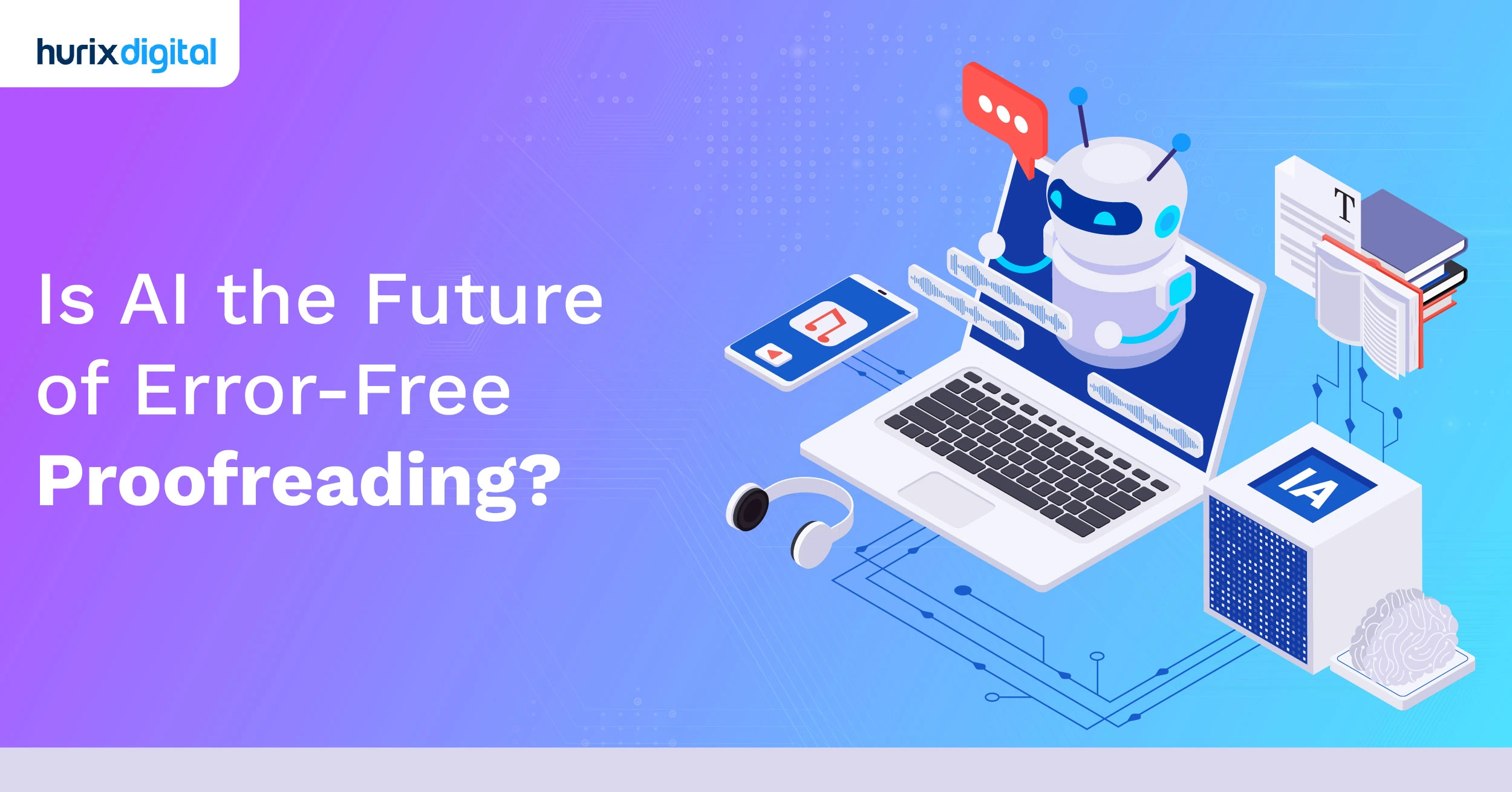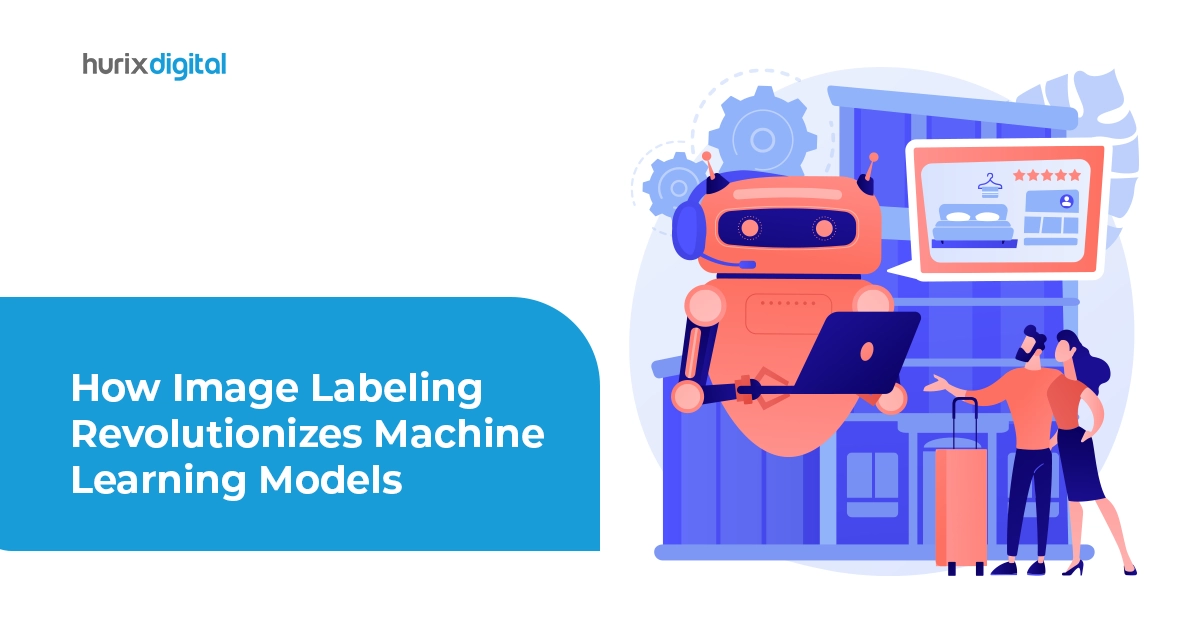
Can LLMs Be the Key to Smarter, Faster Business Workflows?
Summarize with:
The world today is driven by technologies like AI and machine learning. People have developed pre-trained models to understand or interpret data and then give outcomes. These models get even better with time as they use inputs to learn and give better outputs. Large language model are one such thing that is disrupting the world of technology. They have brought artificial intelligence to the forefront. Organizations are now implementing the same across functions.
In this article, we will get an overall picture of how large language models can help you improve productivity and be put to use in your day-to-day business.
Table of Contents:
- What Constitutes an LLM?
- Significance of Language Model Integration
- Utilizing LLMs for AI-driven Workflow Optimization in Businesses: Key Considerations and Role
- Strategy 1 – Initiate LLMs in Business Operations
- Strategy 2 – Language Model Implementation in Customer Interaction
- Strategy 3 – Personalized Customer Experiences
- Strategy 4 – Improving Decision-making Processes
- Strategy 5 – Enhancing Collaboration and Communication
- Strategy 6 – Follow Best Practices for LLM Implementation
- Benefits of Employing Language Model Solutions for Businesses
- 6 Ways in Which Large Language Models Will Help
- Why are LLMs Important for Sales and Marketing Automation?
- How can LLMs Help You with Lead Generation?
- How can LLMs Help You with Lead Nurturing?
- Conclusion
What Constitutes an LLM?
An LLM, short for Large Language Model, is a form of specialized artificial intelligence designed to produce text that looks like human-generated content. The biggest example of an LLM is OpenAI’s GPT-4, which can comprehend context, generate appropriate responses, and execute complex tasks.
Language model solutions for businesses lead to lower human error and high productivity and ROI. Language model integration broadly enhances language processing functionalities like automating personalized content, facilitating support interactions, or extracting key business insights.
However, the current LLMs in business operations are not the final or best version, as they still necessitate training on extensive datasets. Undoubtedly, the versatility of language model implementation surpasses linguistic skills. Nevertheless, there is still a need to understand relationships, encompassing data analysis and solidifying customer interaction.
Significance of Language Model Integration
Businesses need to identify challenges or areas of operational inefficiency within their workflows. They must employ LLMs to analyze, process data, offer insights, and rectify challenges.
Likewise, language model solutions for businesses empower AIs to work on large data sets, comprehend user needs based on NLP inputs, and then present the data effectively.
Let us look at key examples here:
- Coca-Cola integrates AI into modern vending machines and connects them with the Coca-Cola Freestyle app. This provides valuable data for optimizing sales strategies.
- Chatbots on platforms like Facebook Messenger strengthen user engagement. They are well-equipped with AI advancements that allow them to adapt language and personality according to users’ needs.
- Johnson & Johnson has utilized AI and LLMs to process scientific literature for drug development.
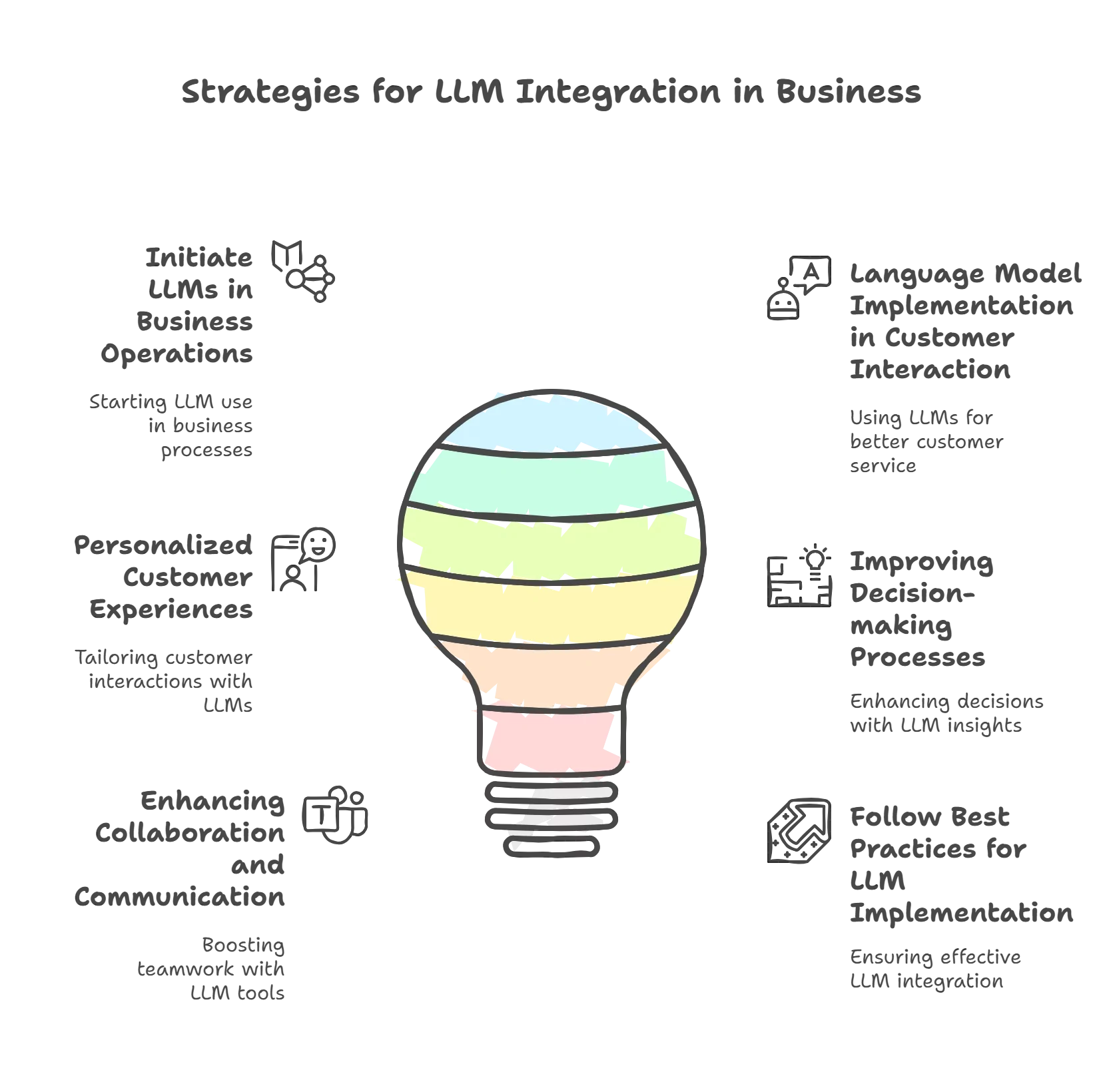
Utilizing LLMs for AI-Driven Workflow Optimization in Businesses: Key Considerations and Role
Leveraging language models for efficiency helps businesses handle complicated tasks and alleviate the burden of manual work.
Let us look at some important strategies to enhance the role of LLMs in today’s industrial infrastructure:
Strategy 1 – Initiate LLMs in Business Operations
Business workflow optimization is imperative in today’s corporate environment, where leaders grapple with process management challenges. LLMs in business operations emerge as a fundamental solution for businesses that want to remain relevant during this rapid change. Implementing LLMs in business operations involves:
- Step 1 – Assessing the requirements of the task at hand
- Step 2 – Leveraging language models for efficiency
- Step 3 – Training the model using relevant data sets
- Step 4 – Refining the model based on feedback and metrics
Strategy 2 – Language Model Implementation in Customer Interaction
LLMs enhance customer support services by powering applications and tools like:
- Intelligent chatbots
- ChatGPT
- Google’s PaLM 2
These rich resources come with exclusive features, such as the ability to apply logic, common sense, reasoning, and even advanced coding, as well as proficiency across diverse languages.
Strategy 3 – Personalized Customer Experiences
AI-driven workflow optimization through LLMs includes data analysis and adaptive learning algorithms. LLMs facilitate highly personalized customer interactions, enhancing customer satisfaction and promoting sustained engagement.
Strategy 4 – Improving Decision-making Processes
LLMs collect, analyze, and present data that empowers leaders to make insightful decisions based on real-time insights and comprehensive data analysis.
Strategy 5 – Enhancing Collaboration and Communication
Leveraging language models for efficiency facilitates real-time document editing and feedback exchange. Eventually, this drives business workflow optimization, which leads to a productive work environment and organizational success. Further, it enables efficient information exchange and a culture of teamwork and innovation.
Strategy 6 – Follow Best Practices for LLM Implementation
It’s crucial to pinpoint tasks that are suitable for automation. Choose tasks that involve repetitive processes, natural language understanding, or content generation. Other best practices are:
- Start with a small-scale pilot project, assess LLM’s effectiveness, refine strategies, and identify potential hurdles before scaling up.
- Process ongoing adjustments and optimization to align with specific requirements.
- Regularly monitor LLM performance, gather user feedback, and make necessary adaptations.
Benefits of Employing Language Model Solutions for Businesses
Some of the key advantages of language model implementation are:
- Enhanced Time Management: By automating various business processes with LLMs, developers now save significant time, resulting in a more efficient project management journey.
- Promotes Training: LLMs offer a remedy by generating a diverse and expansive set of training examples.
- Facilitates Multilingual Intent: LLMs generate intent examples in multiple languages, which translates to cost savings for businesses.
- Automated Response Generation Powered by LLMs: This crafts suitable responses, encourages collaboration between developers and designers and enables automatic response generation across various channels of customer interaction.
- LLM-driven Flow Generation: Leveraging language models for efficiency, developers now only provide the flow’s name and description. LLMs then automate the entire process and further generate all necessary nodes within the flow.
- Mitigation of Human Error: LLM-driven node generation minimizes human errors, ensuring accuracy throughout the process.
- AI-Powered Business Optimization of Employee Performance: Automating tasks frees up agents’ time, enabling them to focus on addressing more complex issues.
- Enhancement of Customer Experience: With additional time for engagement, employees can provide personalized attention to clients, thereby improving the quality of the customer experience.
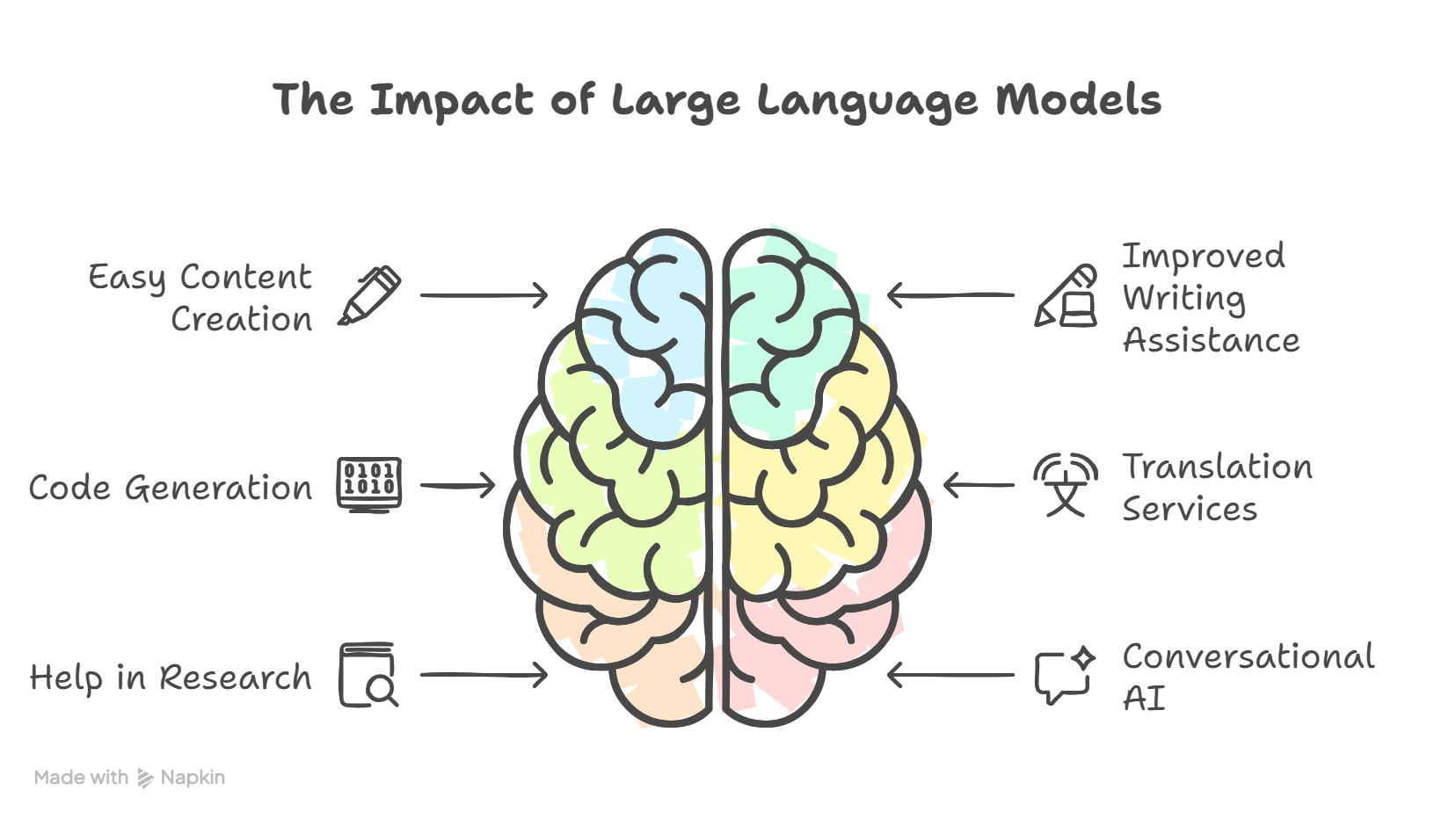
6 Ways in Which Large Language Models Will Help
There are several large language model benefits you must know about if you plan to use them. Let’s try to understand how language model integration strategies will help you do your work efficiently.
1. Easy Content Creation
If your job requires creating or curating different pieces of content at regular intervals, you can make use of large language models. These models self-train themselves based on the inputs you give them over time to improve their results.
You can give them a specified input based on which it will generate content. This gives you the liberty to define the layout, content type, and length of the piece, which comes in handy when you are creating content for your product pages.
2. Improved Writing Assistance
Language models use predictive techniques to give content suggestions. You can integrate these models into the tools you use for writing. The model can keep giving you tips along the way, helping you to complete the piece faster.
Also, these models will suggest incremental changes to make your content even more impactful.
3. Code Generation
Coding is one field that requires you to type extensively. However, with LLMs, coding has become a cakewalk. You just need to be good at giving instructions and explaining exactly what you want to the model. Once it processes the input, your code will be generated in seconds.
4. Translation Services
With technological advancements, people from all over the world are coming closer. With LLMs, you can translate scripts and documents in real-time. This has drastically reduced the time and effort that was required to translate and decode the text.
Also, it helps companies save translator fees and other related expenses.
5. Help in Research
Companies spend a lot of time and energy conducting research. However, with LLMs, research support is available with one click. You can use LLMs to conduct your secondary searches.
While you can use Google Search, LLMs will collate all the relevant information so that you can glance through it.
6. Conversational AI
With the help of LLMs, you can build chatbots or conversational AI tools, providing your customers with 24/7 support. Hence, it reduces the burden of your customer service team as these models and chatbots can interpret the queries and provide suitable output.

Why are LLMs Important for Sales and Marketing Automation?
LLMs can help automate your marketing processes and boost lead generation and nurturing.
Here’s how they can contribute to streamlining sales and marketing for businesses:
1. High-Quality and Diverse Content Generation
LLMs can generate engaging content for your website, blog, social media, email, and other channels.
They can write headlines, captions, descriptions, stories, reviews, testimonials, and more based on your keywords, topics, and tone.
2. Understanding Your Customers and Their Needs
LLMs can analyze customer data, such as demographics, psychographics, purchase history, and feedback.
They can provide you with insights and recommendations on how to segment, target, and personalize your campaigns.
3. Customer Interactions
LLMs interact with your customers and prospects in real-time and at scale. They can create and manage chatbots, voice assistants, and other conversational agents.
- These tools can answer questions, provide information, offer guidance, and generate leads.
- LLMs can also handle natural language queries and commands, such as “Show me the best deals for laptops” or “Book a demo with a sales rep.”
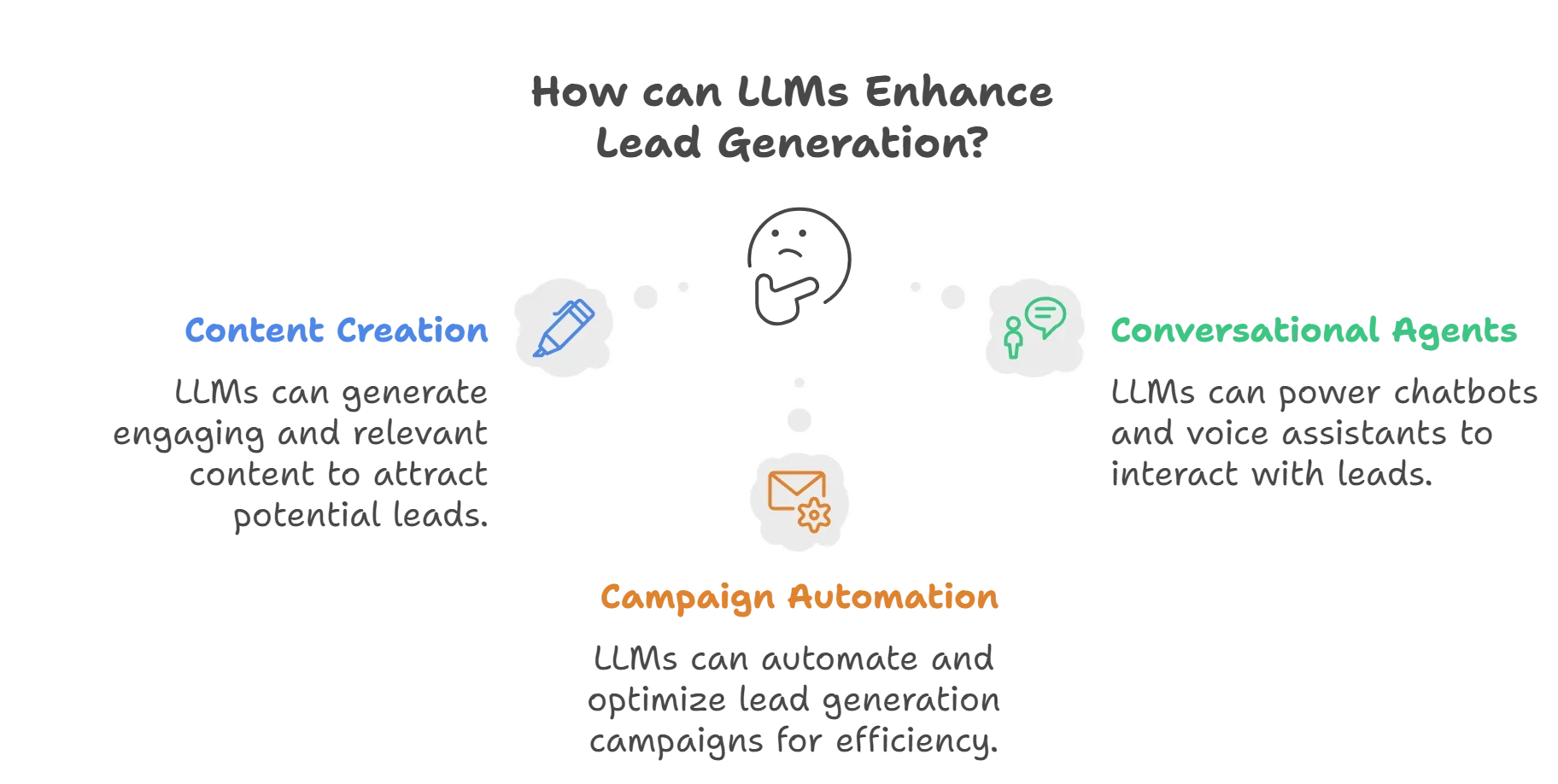
How can LLMs Help You with Lead Generation?
Lead generation is the process of attracting and capturing potential customers for your products or services. It is crucial for sales and marketing, as it helps you build your pipeline and grow your revenue.
You can use LLMs for Lead Generation by:
1. Creating Engaging and Relevant Content
You can use LLMs to write blog posts, ebooks, whitepapers, case studies, infographics, and more.
- This content can showcase your value proposition, address your audience’s pain points, and provide solutions.
- LLMs can also optimize your content for search engines and social media by using the right keywords, tags, and hashtags.
2. Chatbots, Voice Assistants, and Other Conversational Agents
LLMs can create and manage chatbots, voice assistants, and other conversational agents.
- These chatbots can interact with your website visitors, social media followers, email subscribers, and other prospects and generate leads for your business.
- They can also qualify leads by asking relevant questions, collecting contact information, and scoring leads based on their interest and readiness.
3. Automating and Optimizing Your Lead Generation Campaigns
LLMs can help you automate and optimize your lead-generation campaigns.
- They can automate email marketing, social media marketing, webinars, events, and more.
- These models can create and send personalized and timely messages and offers based on your audience’s behavior, preferences, and stage in the buyer’s journey.
- They can also test and analyze your campaigns and provide insights and recommendations on improving your performance and ROI.
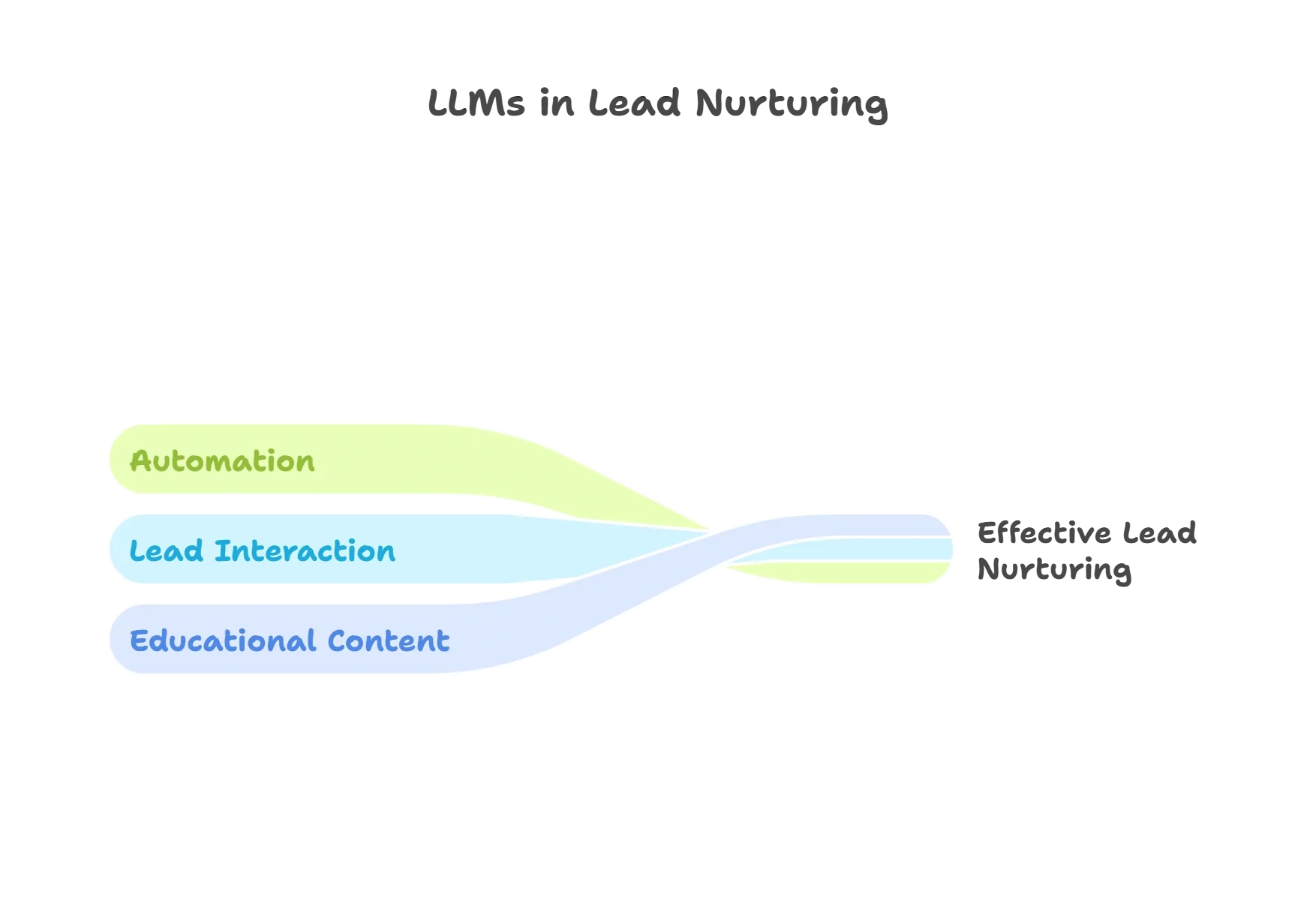
How can LLMs Help You with Lead Nurturing?
Lead nurturing involves building and maintaining relationships with your leads until they are ready to buy from you.
It is essential for sales and marketing, as it helps increase conversion rates, reduce sales cycles, and boost customer loyalty.
LLMs can help you with workflow automation of lead nurturing by:
1. Creating Educational and Engaging Content
LLMs can write newsletters, emails, SMS, and push notifications, providing your leads with valuable information, tips, best practices, and success stories. This information can help them solve their problems and achieve their goals.
Using the right tone, style, and language, you can also use Large Language Models to tailor your content to your leads’ interests, needs, and stages in the buyer’s journey.
2. Interacting and Following Up with Your Leads
You can create and manage chatbots, voice assistants, and other conversational agents that can interact and follow up with your leads.
These chatbots can also answer your leads’ questions, address their objections, and guide them toward the next steps in the buying process.
3. Automation and Optimization
LLMs can help you automate and optimize your lead nurturing campaigns, such as email marketing, social media marketing, webinars, events, and more.
- Use them to create and send personalized and timely messages and offers, based on your leads’ behavior, preferences, and stage in the buyer’s journey.
- You can also test and analyze your campaigns to get insights and recommendations on improving your performance and ROI.
Conclusion
Embracing LLMs in business operations signifies a significant shift towards unparalleled productivity in business workflows, which aim to revolutionize global business operations.
Large Language Models represent more than just technological progress; they cut costs, boost employee engagement, expedite AI-driven workflow optimization in businesses, and enhance productivity. This is just the beginning of the transformative impact. The future of business will witness extensive AI integration as a supportive tool for all organizational tasks.
With Hurix Digital, organizations can optimize their content, data, and assessment platforms using generative AI, automation, and machine learning.
To learn more, Contact us today!
Summarize with:

Senior Vice President
Julia brings over 20 years of global experience in digital learning and business strategy. She specializes in client success, enterprise learning solutions, and driving growth through innovation, with a focus on AI, VR, and emerging technologies across diverse industry verticals.
 Upcoming Masterclass | Build an Army of Brand Evangelists using Training & Development | November 20th, 8:30 AM PDT | 11:30 AM EDT | 10:00 PM IST
Upcoming Masterclass | Build an Army of Brand Evangelists using Training & Development | November 20th, 8:30 AM PDT | 11:30 AM EDT | 10:00 PM IST



